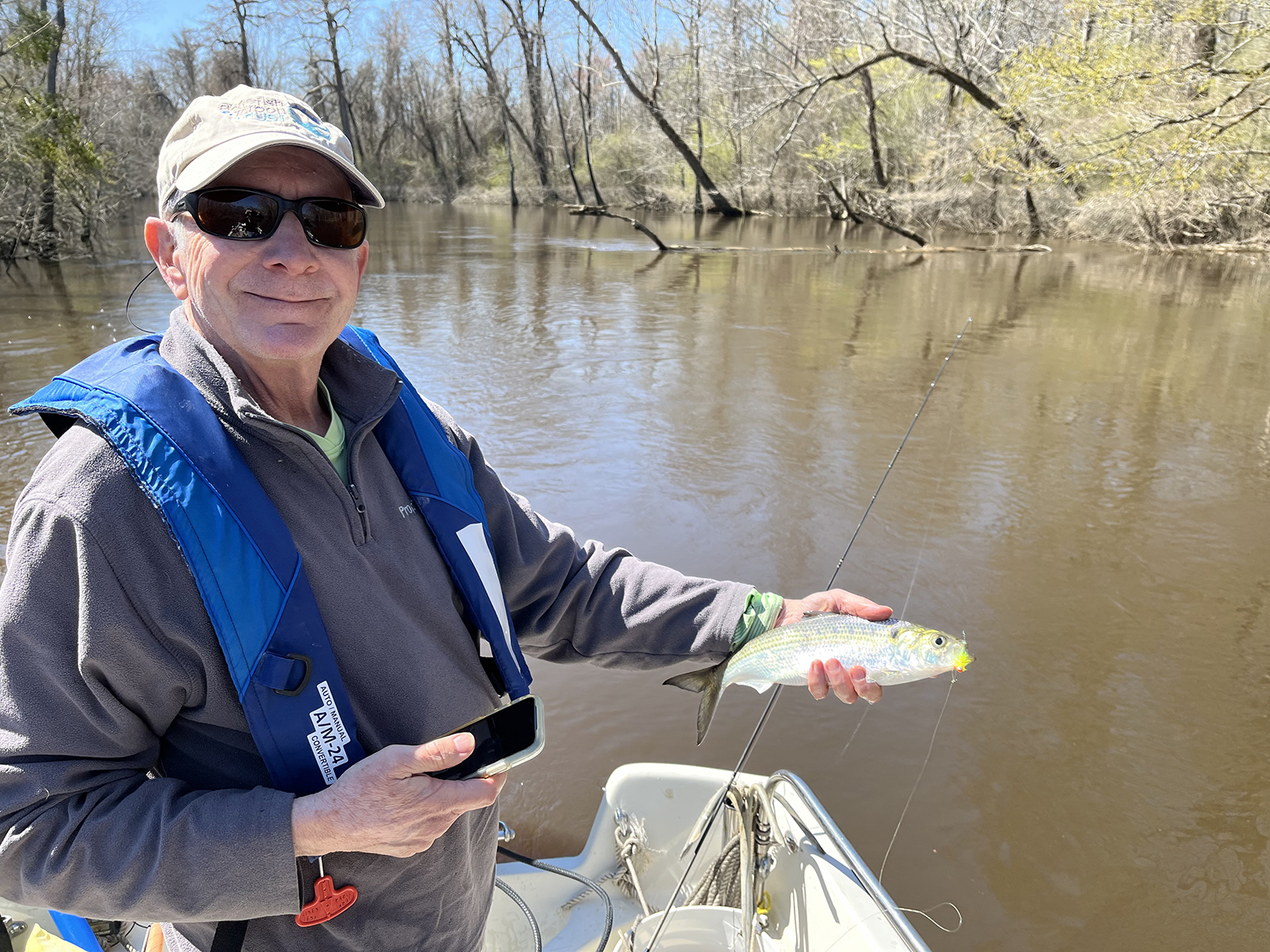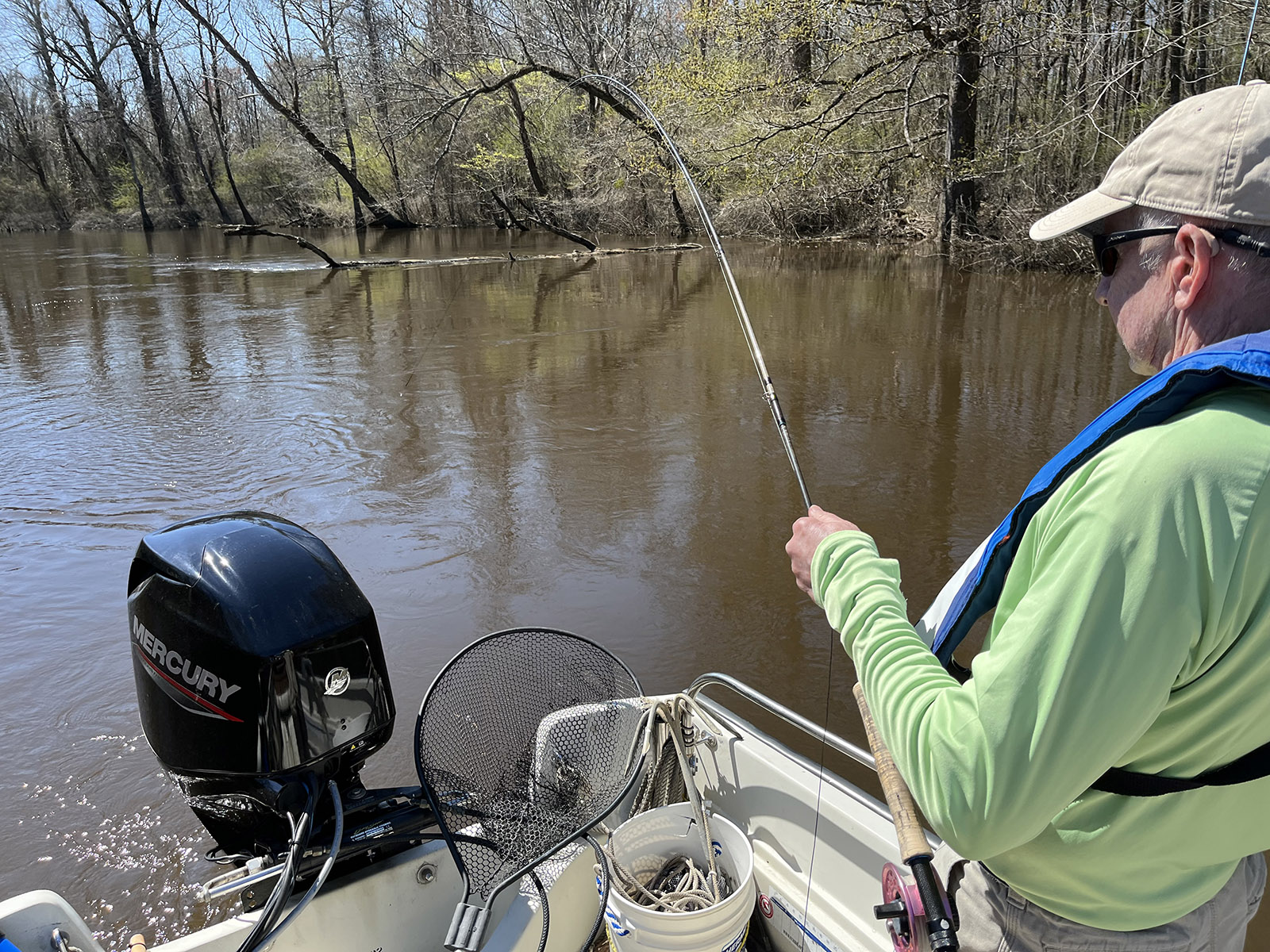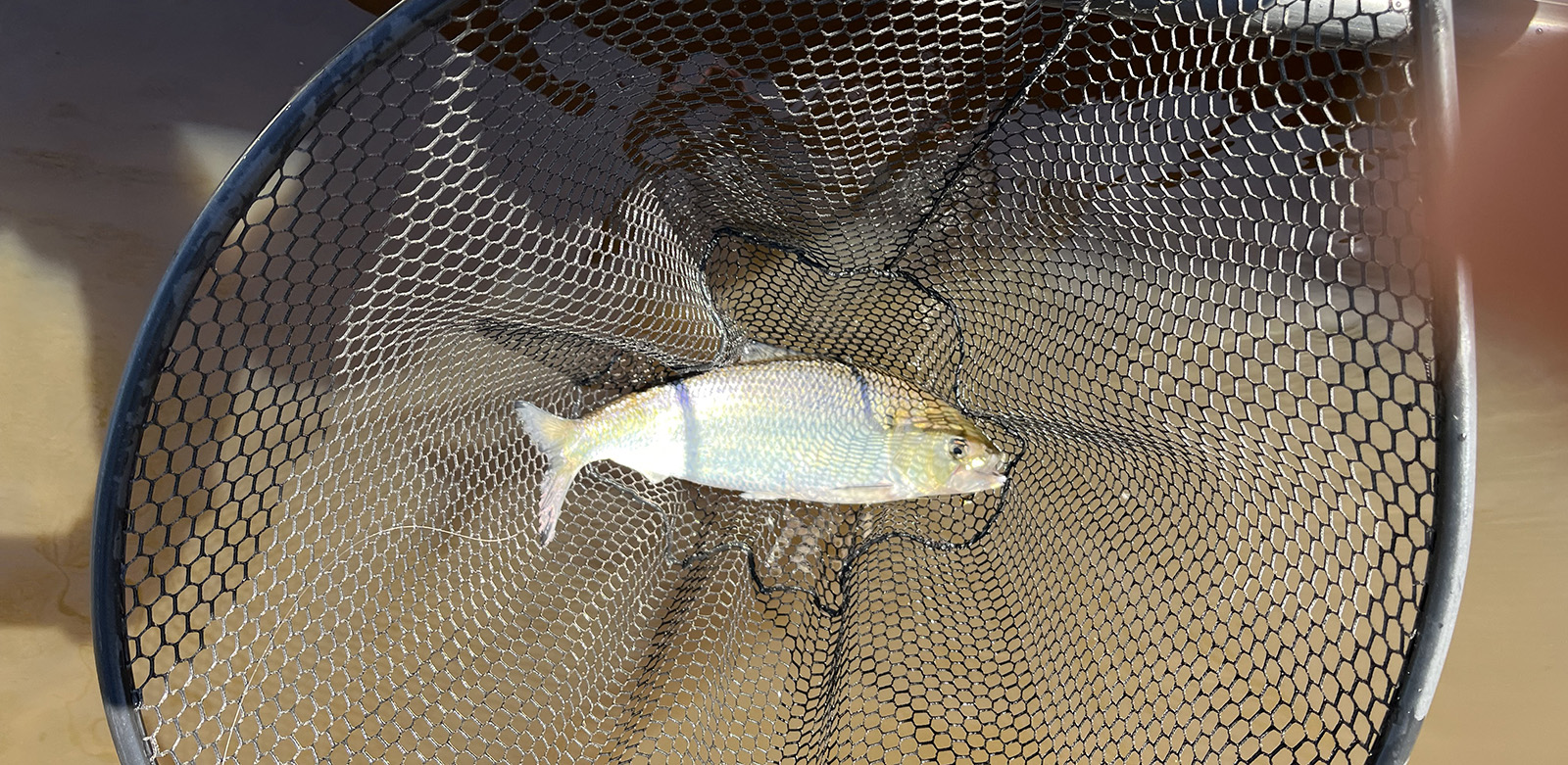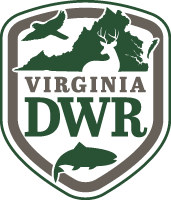By John Page Williams
Photos by John Page Williams
“T-14,” said my friend Kendall Osborne as he roll-cast a 1/32-oz. bright-chartreuse crappie jig into the black waters of Southampton County’s Nottoway River. He had grabbed a 7-weight fly rod before leaving home because it was already set up with the fast-sinking T-14 shooting head he wanted for the seven-to-10-foot depths we would be fishing. On other days, he might have gone smaller, with a 5 or 6-weight rod. Either way, though, he wanted it rigged with a line that could fish that depth range.
It was the third week of March, early for Virginia’s other rivers, but the shad run was already well established here, in waters that flow south to meet the Blackwater, forming the Chowan River on the way to North Carolina’s Albemarle Sound. Though we had fished here before in Kendall’s 16-foot flats skiff, this time we had launched my 17-foot Whaler at DWR’s Hercules boat ramp between Courtland and Franklin, next to the General Thomas Highway Bridge (Rt. 671).
Catching shad here means paying attention to river flow. The Nottoway, a surprising 155-miles long, rises in southeastern Prince Edward County and follows a long, meandering course, with deep bottomland swamps of hardwoods and bald cypress flanking it along the coastal plain. We had been checking the USGS river gauge at Sebrell for two weeks, but the month had started out very wet, with the river cresting there above 17 feet. Finally, it subsided to the 11-12-foot range that Kendall favors for the shad run, with the water temperature at 580F.
Our quarry was the high-leaping “poor man’s tarpon,” the hickory shad, but the Nottoway also offers some larger, stronger American shad, whose run is stronger here than in Virginia rivers flowing to the Chesapeake. Harvest has been closed for Americans throughout the Commonwealth for years, but catch-and-release is allowed for these powerful swimmers. It’s important to understand the regulations for these two related species and distinguish between them, as well as their river herring cousins, the alewife and the blueback, which are also illegal to harvest. The limit for hickory shad on the Nottoway is 10 fish per day. Some anglers keep them for catfish bait, and a few cook the roe sacs (much smaller than the Americans’ are and not as tasty), but most simply enjoy the hickories’ extraordinary leaping ability and release them in the water to continue on their spawning mission.

Kendall Osborne with a nice hickory shad caught on the Nottoway.
The section of the Nottoway upstream of the Hercules landing meanders back and forth for about 7.7 miles from the Hercules Landing to the next bridge upstream, Route 58 near Courtland, though the distance as the crow flies is only 4.4 miles. To the untrained eye, the curves look much the same, with numerous dead-end side branches and fallen trees in the channel. We followed the flow (mostly ebbing), kept a sharp lookout, watched the depth sounder (the channel at this river stage is mostly 5 to 6 feet deep, with some BIG trees submerged), and maintained moderate speed. We slowed to no-wake speed when passing other anglers’ boats in this narrow waterway. It was impressive to see the marks on the trees left by the river’s crest days before.
Kendall chose a spot where a fallen tree cut off nearly half of the channel, forcing the flow to scour an eight-foot-deep depression. We set a grapnel anchor on a breakaway rig about 15 yards above the hole and let the skiff settle back into easy casting distance. Thus was he positioned to roll-cast his tiny-but-bright jig into the scour hole, allow it to sink (T-14 falls eight to nine inches per second), and let it hang in the current, while he twitched it periodically.

Kendall Osborne hooked up to a shad on the Nottoway.
Meanwhile, I rigged two light spinning rods strung with six-pound braided line, which has the diameter of two-pound monofilament, and six-foot leaders of 15-pound fluorocarbon leading to tandem rigs. Tiny gold spoons went onto the ends, with 1/8th-ounce pink/white shad darts 18 inches above on dropper loops with one side cut to tie on the dart. To ensure easy release, we had crimped the barbs on all of the lures. I cast one rig to the left side of the scour hole, allowed it to sink for a count of eight, and placed the rod’s butt into the outward-pointing rod holder on the starboard side of the skiff. The other rig I cast upstream to the right side, allowed it to sink, and let it ride in the current before letting the spoon swim for a bit at the end of the swing.
Soon enough, Kendall whooped as a silvery hickory cartwheeled into the air with the chartreuse jig in its mouth. He brought it to boatside and slipped the jig out of its mouth without removing it from the water. With a flick of its tail, it went about its business. What followed was a steady pick of hickories showing off their athleticism, including several doubles and one triple, with all three lines hooked up at once. We fished the hole happily for several hours, munching sandwiches in between fish. Some of the hickories threw their lures on jumps, relieving us of having to release them.
As a bonus, two American shad bucks struck gold spoons. Even though they were relatively small for the species at 20 inches and a couple of pounds, their strength was impressive from the moments they struck. Unlike the hickories, they fought deep and pulled drag. One shook off the spoon at boatside. The other spent a couple of minutes in the flat bottom of our release net, held in the water for a photo. Then with a flip of its tail, he too disappeared into the Nottoway’s clear, tannin-stained water.

One of the American shad we caught and quickly released.
We watched him go with wonder at the migration he had made in the past 12 months. According to the information detailed by author John McPhee in his classic book “The Founding Fish,” that shad had migrated the open Atlantic with its kin from Canada’s Bay of Fundy last summer to the mouth of Florida’s St. Johns River this winter. Then he headed north again, ascending this narrow, blackwater swamp stream to find mates and spawn upcurrent beyond its fall line. In May, he would swim back down the Nottoway and the Chowan, across Albemarle Sound, and into the Atlantic, headed back to Nova Scotia. How extraordinary!
As we ran back to the landing, Kendall reflected on our day. He’s a talented tarpon fly angler who counts his successes in jumps, rather than fish brought to boat. He remarked that the challenge was the same with the smaller, but similarly feisty hickories. Although there is great concern in Virginia about the low numbers of American shad returning to the Chesapeake’s rivers, the hickories appear to be running strong in all of them as well as the Nottoway. Aren’t we fortunate to have them brighten our springtime trips?
John Page Williams is a noted writer, angler, educator, naturalist, and conservationist. In more than 40 years at the Chesapeake Bay Foundation, Virginia native John Page championed the Bay’s causes and educated countless people about its history and biology.


